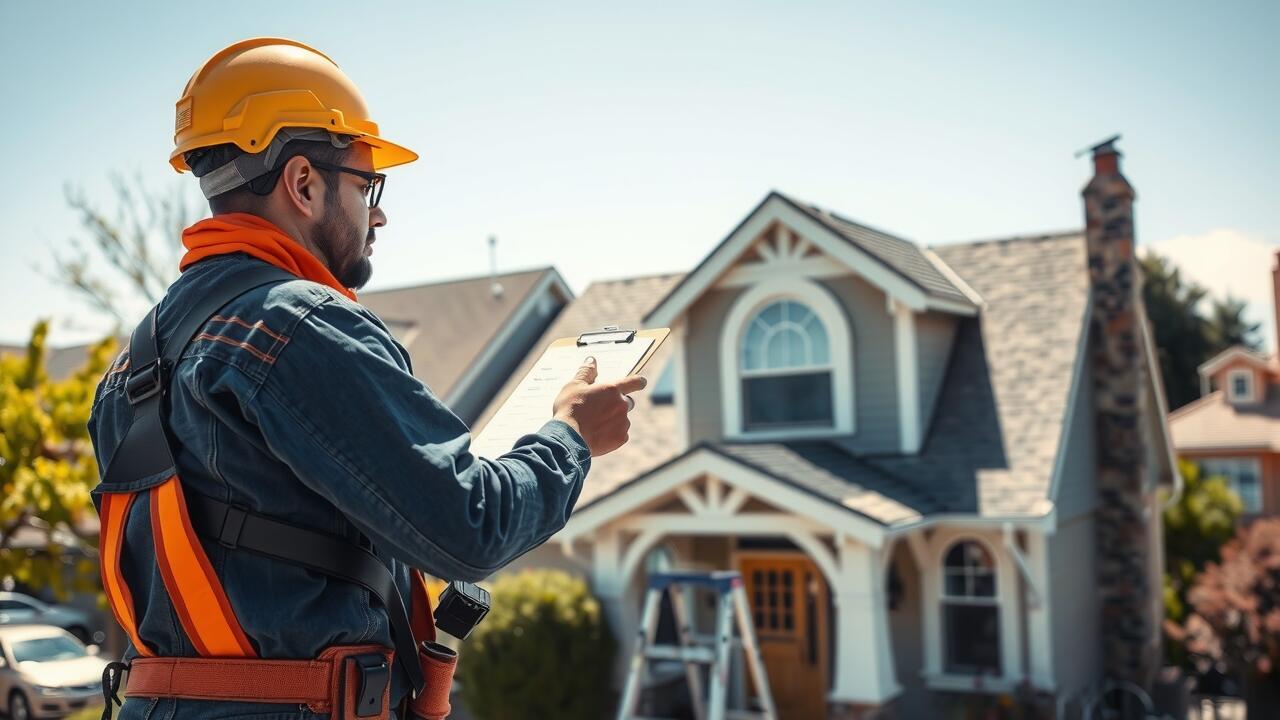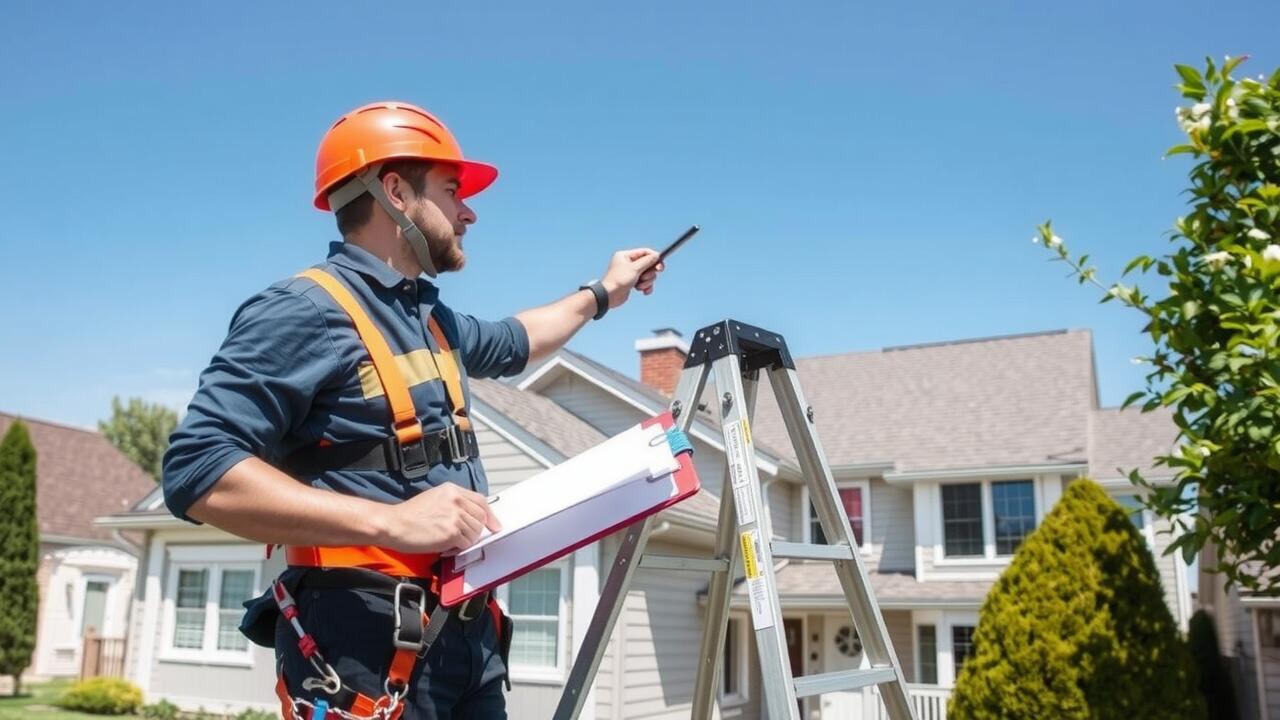
Table Of Contents
Safety Considerations for Roof Inspectors
Roof inspectors must prioritize their safety and the safety of homeowners during inspections. Working at heights carries inherent risks, including falls and accidents. Inspectors in Sioux Village, Rapid City need to properly use safety equipment, including harnesses and ladders, to prevent injuries. Additionally, they should check weather conditions before starting their work, as high winds or rain can create dangerous situations on roofs.
Effective communication is crucial in ensuring the safety of both the inspector and the homeowner. Prior to a roof inspection in Sioux Village, Rapid City, inspectors should inform homeowners about the inspection process and any potential hazards. This can help manage expectations and encourage homeowners to secure pets and clear access to the property, allowing the inspector to focus on identifying any issues without distractions or disruptions.
Protocols for Entering a Home
Roof inspectors often follow specific protocols when gaining access to a home. Before entering, they take the time to communicate with the homeowner about the inspection process. Clear explanations of what will occur during the inspection help ease any concerns. Inspectors typically request that pets be secured and that pathways are cleared for easy access. This preparation ensures a smooth inspection process without unnecessary delays.
During the inspection, the inspector might check for potential issues in areas like the attic or upper levels where roof issues may manifest. Roof inspection in Sioux Village, Rapid City may require inspectors to navigate tight spaces or deal with variable lighting conditions. They are trained to conduct thorough inspections while prioritizing safety. Homeowners can help by ensuring that these areas are accessible and well-lit, further facilitating an effective evaluation.
Homeowner Preparations for Roof Inspection
Preparing your home for a roof inspection can make the process smoother and more efficient. Homeowners should ensure that all access points, such as ladders and attics, are easily reachable. It is helpful to clear any debris or obstacles away from the exterior of the house. This includes removing items like patio furniture, tools, or plants that may obstruct the inspector's view or access to the roof. For those living in areas like Sioux Village, Rapid City, making these arrangements can significantly expedite the inspection process.
In addition to external preparations, homeowners should communicate any concerns or past issues related to the roof. If there are specific leaks or damage observed, providing that information to the inspector is crucial. Indoor areas, especially attics and ceilings, should also be accessible. Ensuring that the inspection team can move freely will help them perform a thorough evaluation. Preparing in this way enhances the chances of identifying potential problems during the roof inspection in Sioux Village, Rapid City.
Ensuring Access and Safety
Proper planning can significantly enhance the efficiency of a roof inspection. Homeowners should ensure that access points to both the exterior and interior of the home are clear and unobstructed. This includes moving furniture or any other items that might hinder movement. In Sioux Village, Rapid City, local inspectors may have specific requirements for accessing the attic or upper floors.
Safety remains a top priority during any inspection. Homeowners should confirm the stability of ladders and ensure that areas around the home’s entry points are well-lit and free from hazards. This is particularly relevant during roof inspection in Sioux Village, Rapid City, where varying weather conditions can affect safety. Clear communication with the inspector about any potential risks observed prior to the inspection can help mitigate issues during the process.
What to Expect During an Indoor Inspection
During an indoor inspection, roof inspectors typically begin by assessing the interior of the home for signs of water damage, leaks, or any structural concerns that could impact the roof. They will often check areas directly under the roof, such as attics and upper floors, to identify any visible issues. Inspectors use tools like moisture meters and thermal imaging cameras to detect hidden problems that are not immediately apparent. This process can help homeowners understand the roof's condition and any potential repairs needed.
In addition to checking for water damage, inspectors may look at ventilation systems and insulation levels. Proper ventilation is crucial for roofing systems, as it can prevent heat buildup and moisture accumulation that might lead to deterioration. Roof inspection in Sioux Village, Rapid City, often involves a thorough review of these components to ensure the home remains in good condition. Inspectors may also take photographs or notes to provide detailed reports for homeowners, outlining their findings and recommendations for any required maintenance.
Typical Procedures Followed by Inspectors
During a roof inspection in Sioux Village, Rapid City, inspectors typically start by assessing the exterior components of the roof. This includes checking for visible damage to shingles, flashing, and gutters. They often use binoculars or drones to get a closer look without needing to climb onto the roof. Inspectors take note of any areas that may need further examination, documenting their findings meticulously to provide a comprehensive report to the homeowner.
If deemed necessary, inspectors may enter the home to evaluate any potential issues related to the roof's interior, such as water stains or mold in the attic. They will often use flashlights or other tools to inspect insulation and ventilation systems. This thorough approach ensures that all aspects affecting the roof's condition are examined, contributing to a well-rounded assessment of the property's overall health.
FAQS
Do roof inspectors always need to come inside the house?
No, roof inspectors do not always need to come inside the house. They can often assess the roof's condition from the exterior and use tools like drones or cameras for detailed inspections.
What safety considerations do roof inspectors take into account?
Roof inspectors prioritize safety by using appropriate fall protection equipment, assessing weather conditions, and ensuring proper access to the roof, as well as considering any potential hazards on the property.
What should homeowners do to prepare for a roof inspection?
Homeowners should clear any obstacles around the property, such as vehicles or debris, and ensure that the inspector has safe and easy access to the roof area. It's also helpful to address any specific concerns with the inspector beforehand.
What happens during an indoor inspection of the roof?
During an indoor inspection, inspectors typically look for signs of leaks, water damage, and structural issues in the attic or upper levels of the home. They may also check insulation and ventilation systems.
Are there typical procedures followed by inspectors during an indoor inspection?
Yes, typical procedures include visually inspecting the roof structure, checking for signs of moisture or mold, assessing insulation quality, and evaluating ventilation systems to ensure proper airflow.
